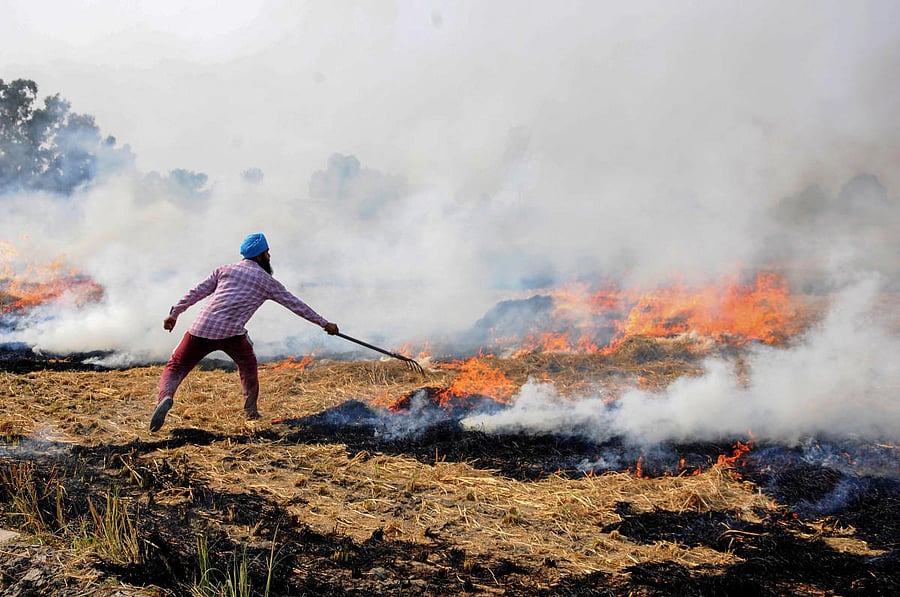
On the face of it, stubble burning and plastics pollution may not have much in common, but researchers at the Indian Institute of Science (IISc) here believe they are on the verge of a solution which could help tackle both problems.
Their answer? A new composite material created from the cellulose of agricultural or stubble waste which may one day replace conventional plastics.
The idea was driven by a need to create a green, more biodegradable and affordable technology to replace single-use plastics, explained Associate Professor Kaushik Chatterjee of the IISc’s Department of Materials Engineering and Center for BioSystems Science and Engineering. He pointed out that while there are myriad green technologies out there, not many are affordable.
“Single-use plastics are not biodegradable. Secondly, they are derived from fossil fuels. What we tried to do was to create a sustainable material which could replace these plastics,” he added.
The researchers set out by creating a new polymer out of plant cellulose and vegetable oil. “We used cellulose from stubble combined with non-edible vegetable oil so that one is not competing with a food resource,” Dr Chatterjee said.
This had the twin effect of reducing the dependency of cellulose extraction from newly cut trees while giving farmers an economic incentive to dispose of their cellulose. “Instead of burning stubble, farmers could at least use it to earn money by extracting cellulose out of it first, to fit a strategy of waste-to-wealth,” he added.
Stubble waste is a major problem especially in North India, where farmers burn about 23 millions tonnes of paddy stubble every year, as per research published in the journal Science in 2019.
Lab studies at the IISc, which have been proceeding for the past year, show that the new composite material can be altered to serve any practical use, from hard items such as cutlery to pliant materials such as bags. The institute has applied for Intellectual Property rights.
Meanwhile, the researchers said, they are conducting studies to determine the rate of degradation of the material. “It will be months to a few years depending on the formulation of specific materials we have created. Equivalent tests of degradation in landfills will take several months to do,” the researchers said.
Lab tests have shown that cups made out of the new polymer and filled with water for several weeks start to exhibit weight loss which would suggest that degradation is happening.
The other members of the research team include Associate Professor Suryasarathi Bose, research associate Indranil Chakraborty and PhD students, Pritiranjan Mandal and Subhasish Maiti.
Check out DH's latest videos
